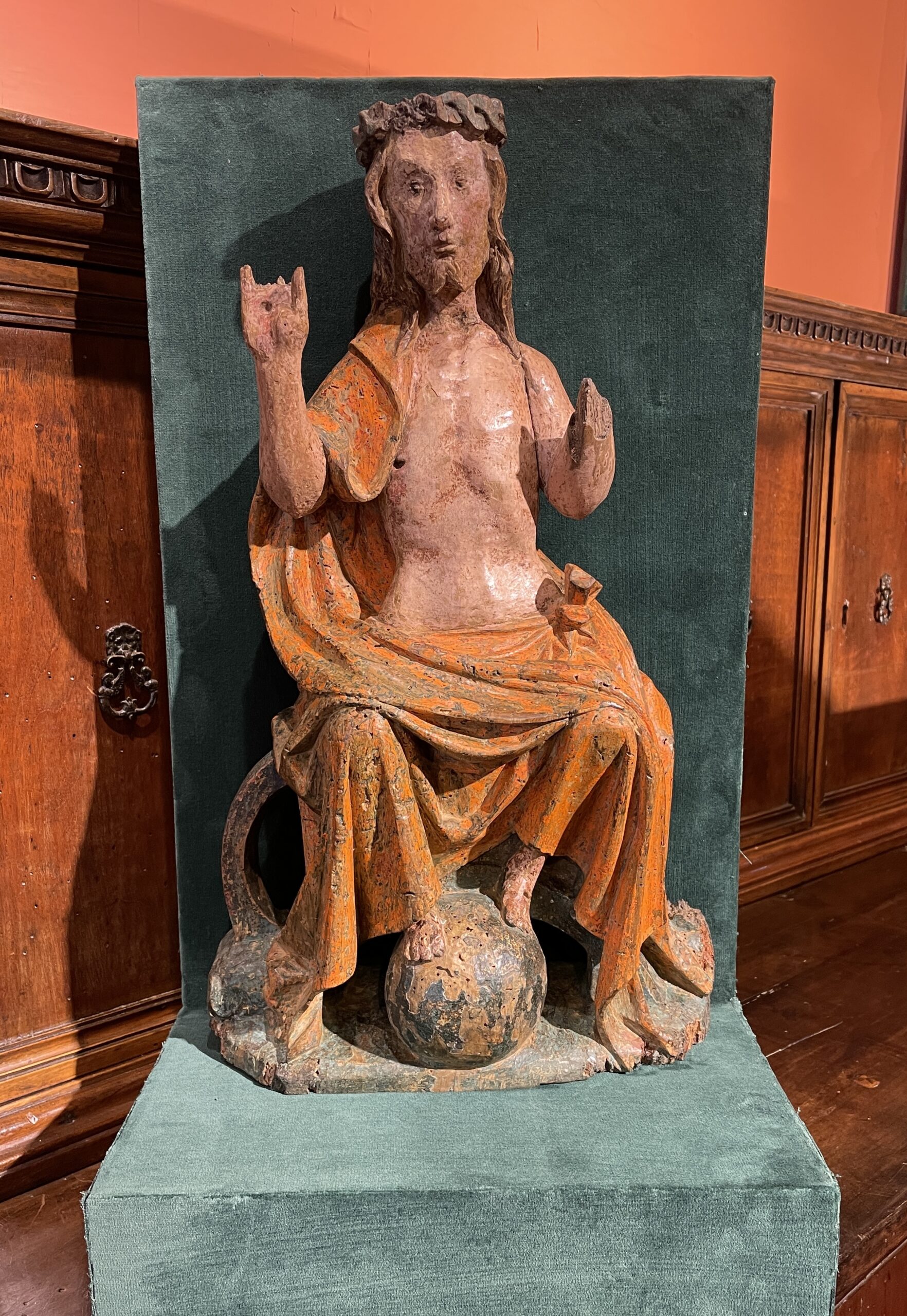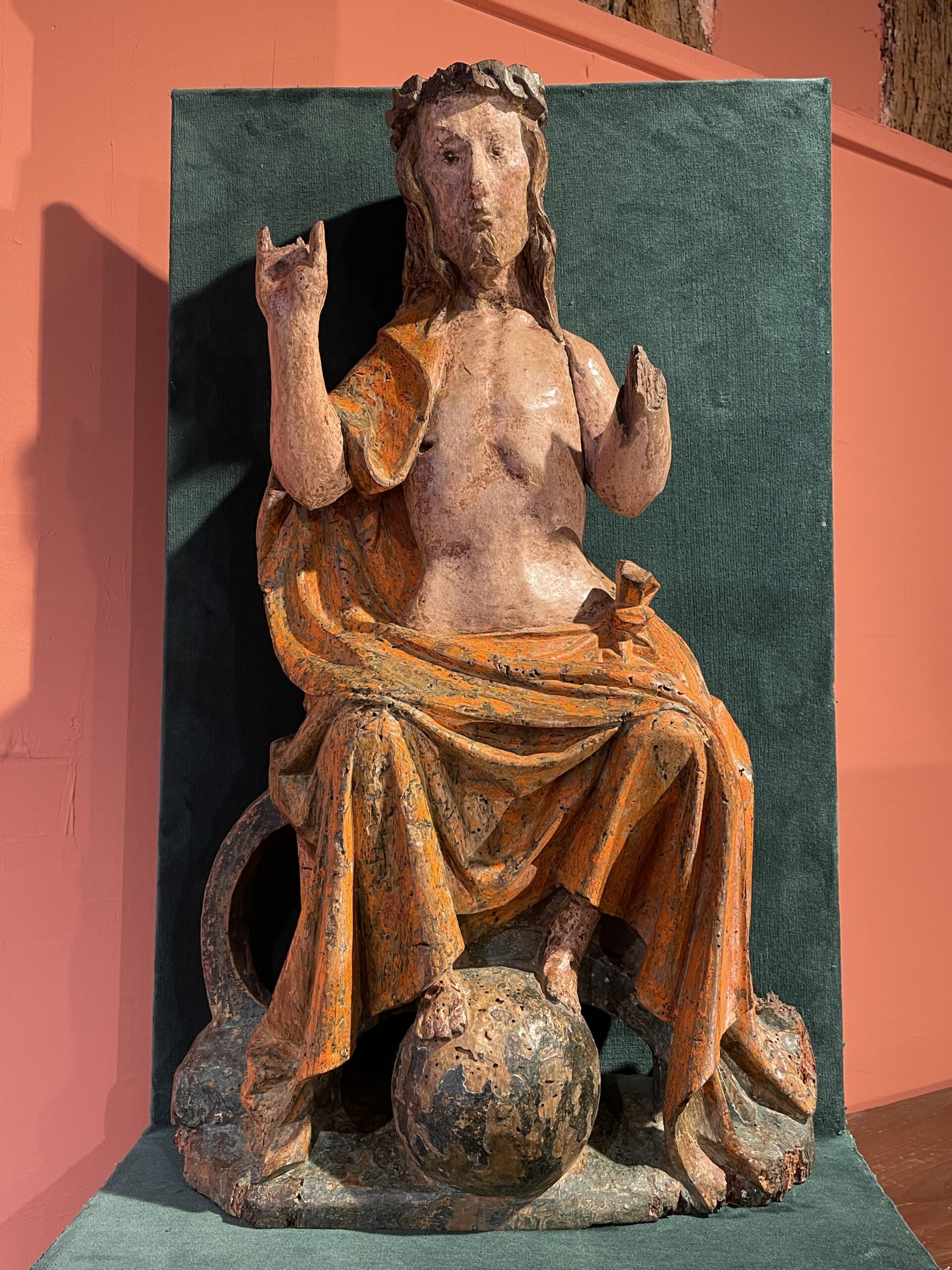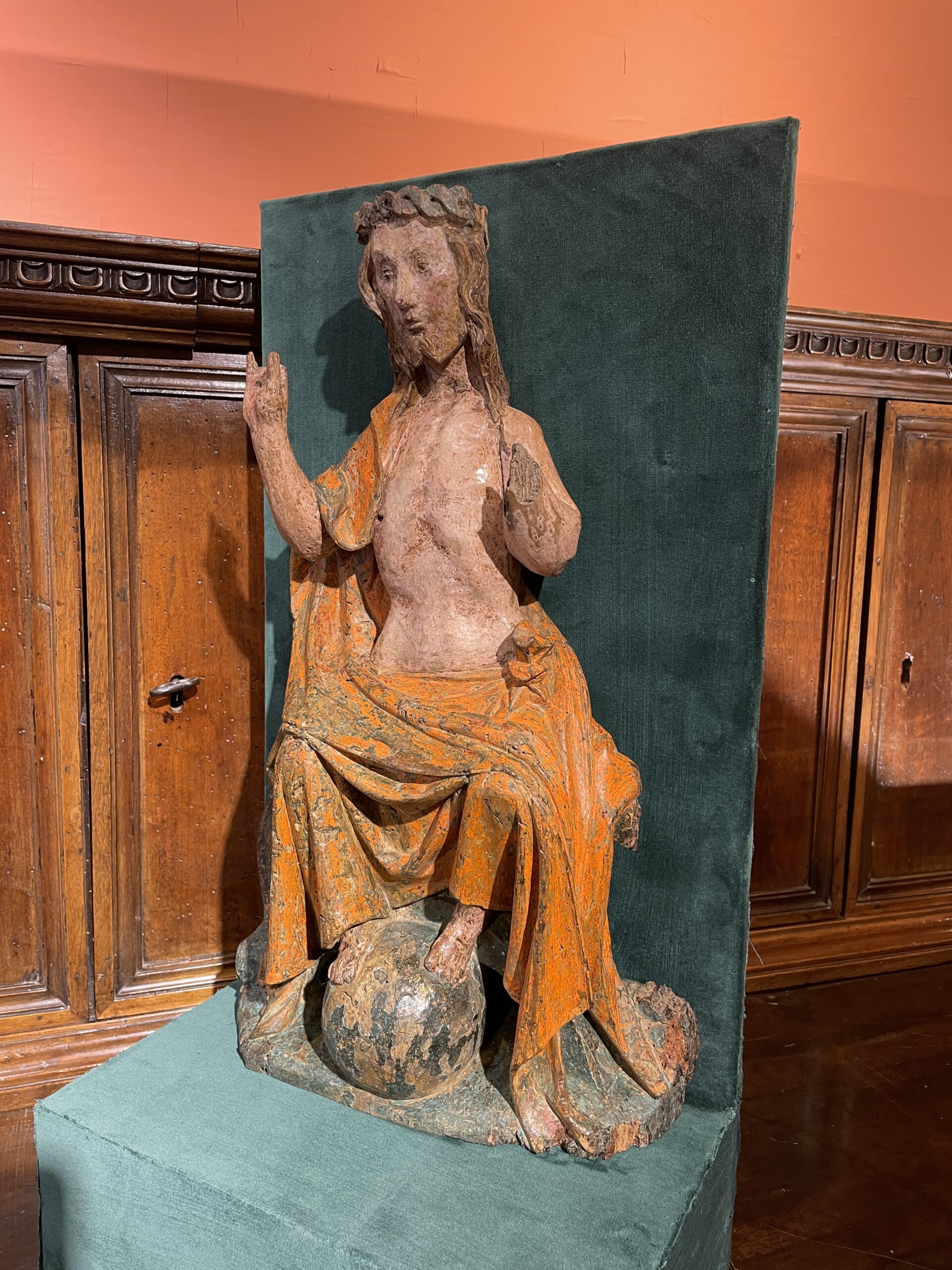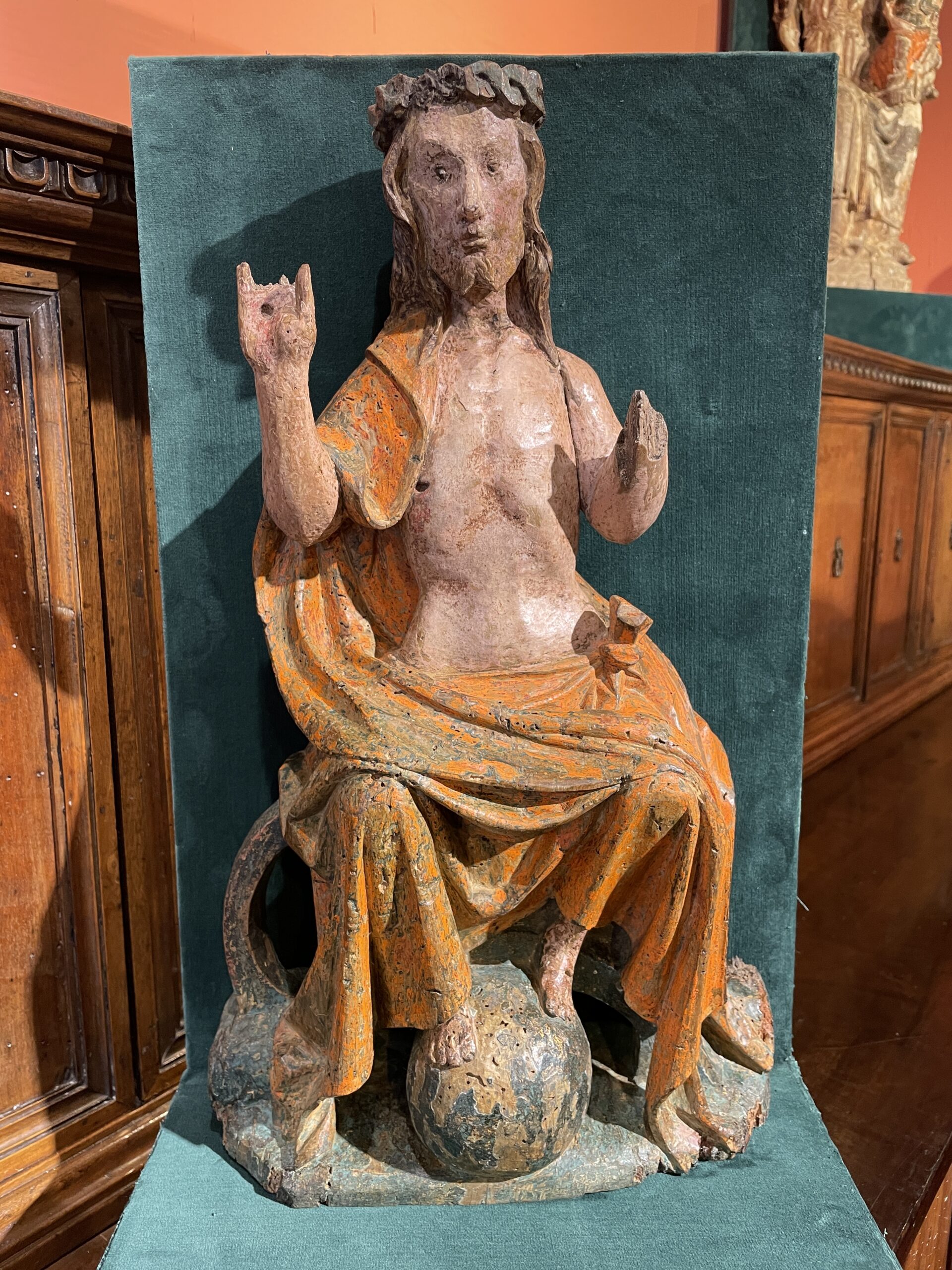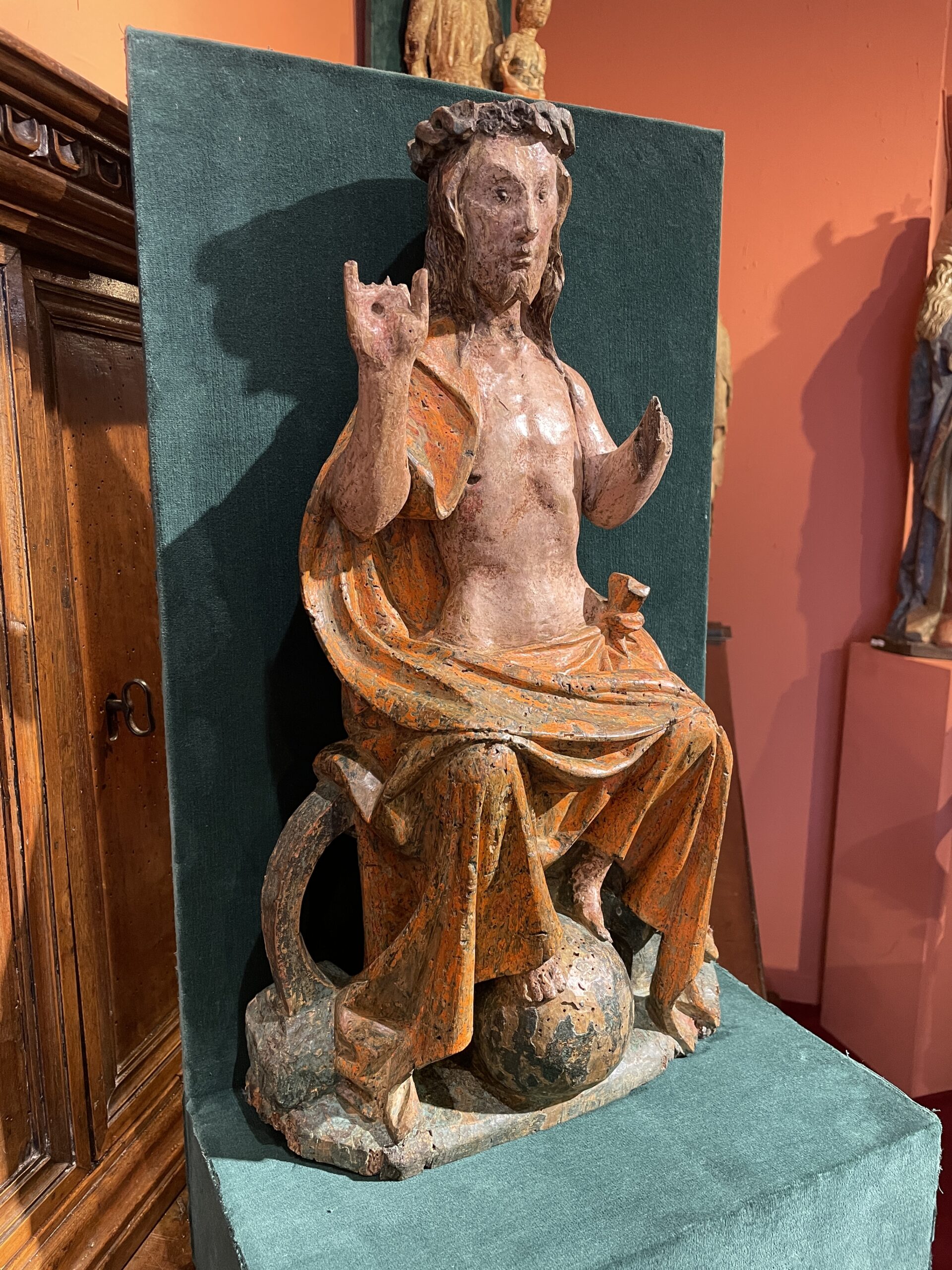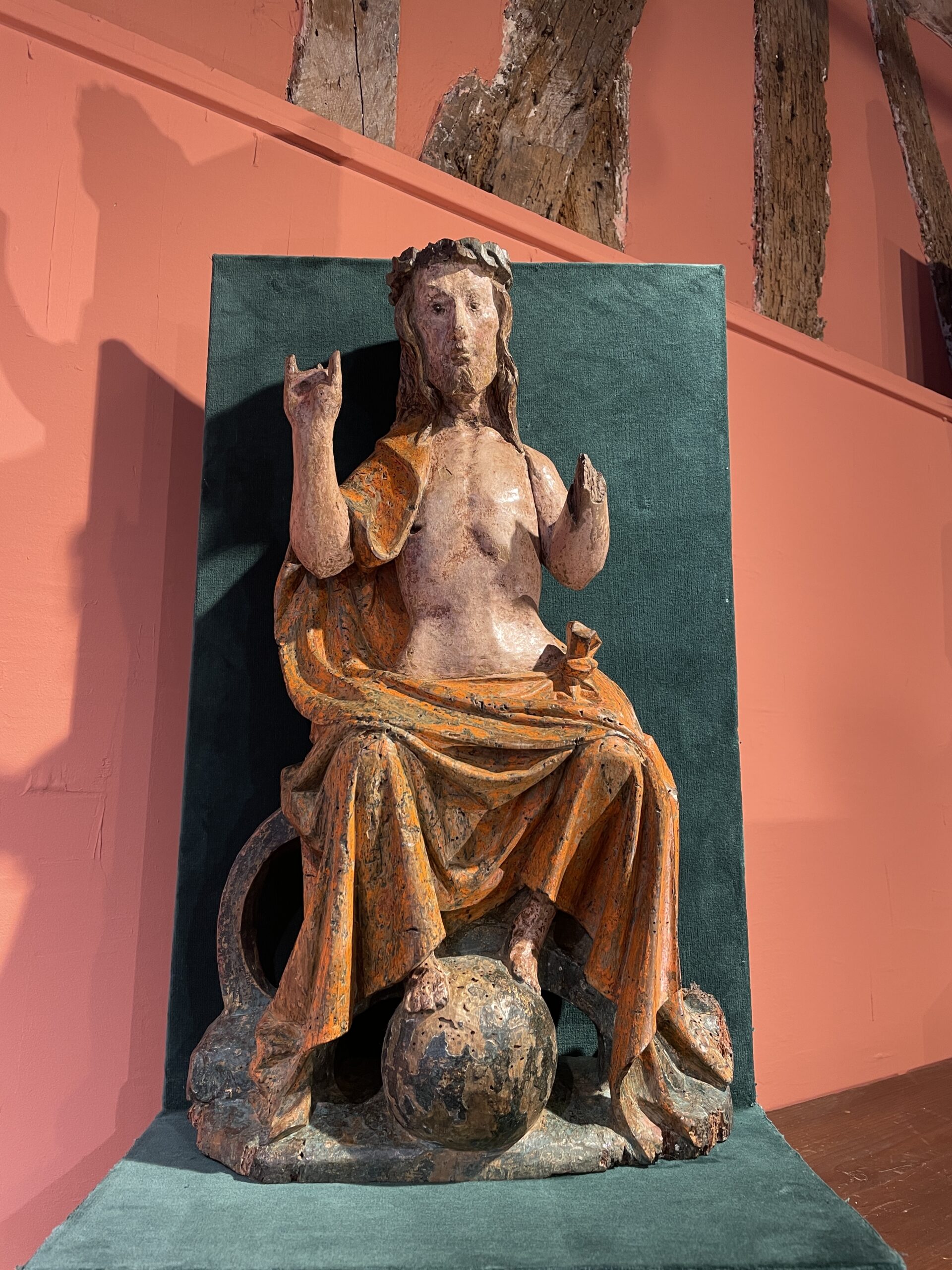Description
This Christ belongs to a very rare iconographic type. It is the one where Jesus, seated, presents himself frontally, crowned with thorns, and displays the wounds of his Passion, whether it be the nail marks of the Crucifixion visible on the palms of his hands or the spear wound in the chest, widely exposed under the mantle that envelops the rest of his body.
Crafted with skill, this work conveys a striking image of the Christ after the Passion, emphasizing less the suffering of the crucifixion than the posture of the resurrected Christ as judge, in accordance with the symbol of the apostles: “…he is seated at the right hand of God the Father Almighty, from where he will come to judge the living and the dead.”
In this representation, Christ is seated on a double-arched bench, placed on a bush. His bare feet rest on the World, a symbol of divine omnipotence. Wearing a crown of still-green thorns, his hair and beard are sculpted in parallel. With a fair complexion, the finely carved features of his face are nonetheless very expressive. An orange mantle covers his shoulder, drapes his back, and falls in folds knotted at the waist, onto his knees. This presents his well-defined and well-modeled stature to the viewer. The sculpture, executed in the round, largely retains its original polychromy.
The Christ originally had both forearms raised in a gesture of blessing. Today, only the right one remains.
Comparative Study:
Our Christ Judge can be compared, in subject, posture, and physiognomy, to the one located in the Saint Sauveur Church in Monnai, Orne – Normandy. (Classified as a Historical Monument on October 28, 1992)
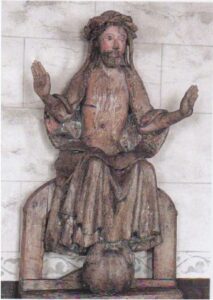
A German Christ of Swabian origin from the 14th century features the same arched profile bench as the one we are presenting:

Another Christ, from the second half of the 14th century, Rhineland, adopts the same posture with a mantle draped in a similar manner.
Bibliography :
Arminjon Catherine & Berthelot Sandrine, Chefs-d’œuvre du Gothique en Normandie, Sculpture et orfèvrerie du XIIIème au XVème siècle, ed. 5 continents, 2008.
Manfred Fath. « Der Weltenrichter der Mainzer Westlettne-Deesis und seine Nachfolge” in Mainzer Zeitschrift.
Mittelrheinisches Jahrbuch fur Archaologie. pp. 97-100.
Legner Anton, Rheinische kunst und deas kolner Schnuttgenmuseum, Cologne, 1991, pp. 221, 225, 256.
Vgl. Heribert Meurer, Wurttembergisches Landesmuseum Sttutgart. Die mittelalterlichen Skulpturen, I, Stein und Holzskulpturen 800 – 1400, Stuttgart 1989, S. 148-150.

